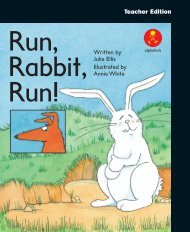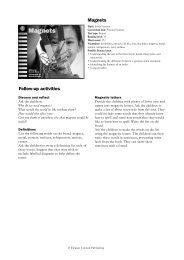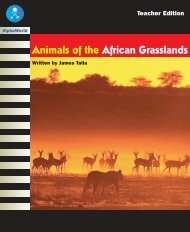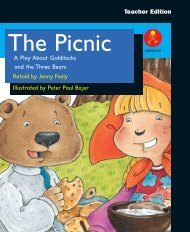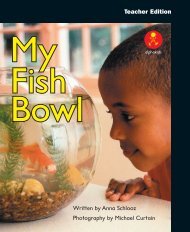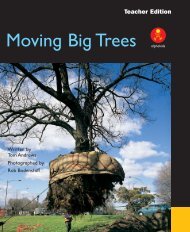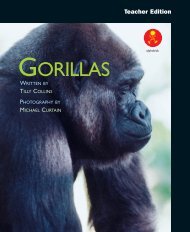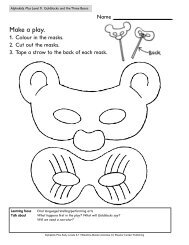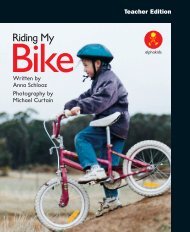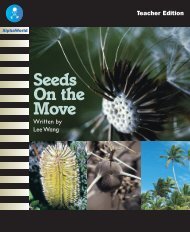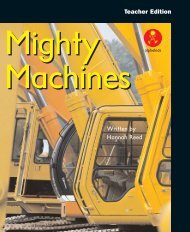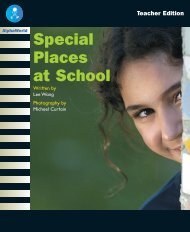You also want an ePaper? Increase the reach of your titles
YUMPU automatically turns print PDFs into web optimized ePapers that Google loves.
Responding to text<br />
Children could dramatise<br />
the information in the book<br />
to show where different dragon<br />
lizards live and what they do if they<br />
are frightened. Children could<br />
make lizard masks to support their<br />
drama.<br />
Children could work in<br />
cooperative groups to make a<br />
dragon lizard exhibition. Provide<br />
plasticine, leaves and twigs for the<br />
children to make models of the<br />
dragon lizards and their habitats.<br />
Encourage the use of labels and<br />
signs to explain dragon lizard<br />
behaviour.<br />
Working in pairs, children<br />
could make a list of words<br />
that describe the features of dragon<br />
lizards. Encourage the children to<br />
use the book as well as their own<br />
ideas.<br />
Writing links<br />
Shared writing<br />
Invite the children to help you fill<br />
in a chart with the following<br />
headings:<br />
Name of<br />
dragon<br />
Special<br />
features<br />
What this<br />
dragon<br />
does when<br />
frightened<br />
Other<br />
interesting<br />
facts<br />
Independent writing<br />
Children could write a book about<br />
another group of animals using this<br />
book as a model. Encourage the use<br />
of captions.<br />
Possible assessment focus<br />
Can the child:<br />
• identify the purpose of captions<br />
• say what they learned by reading captions<br />
• interpret the text to explain the common features of dragon lizards and<br />
other lizards<br />
whole text activity sentence activity word activity



